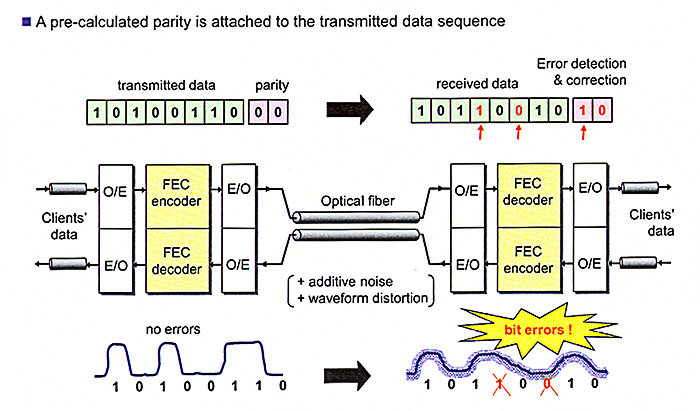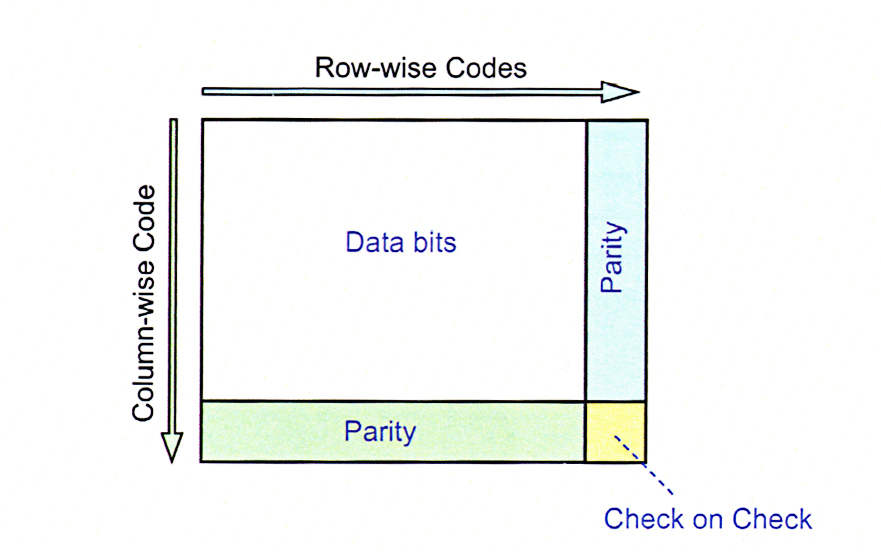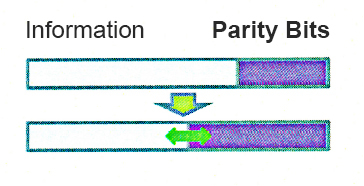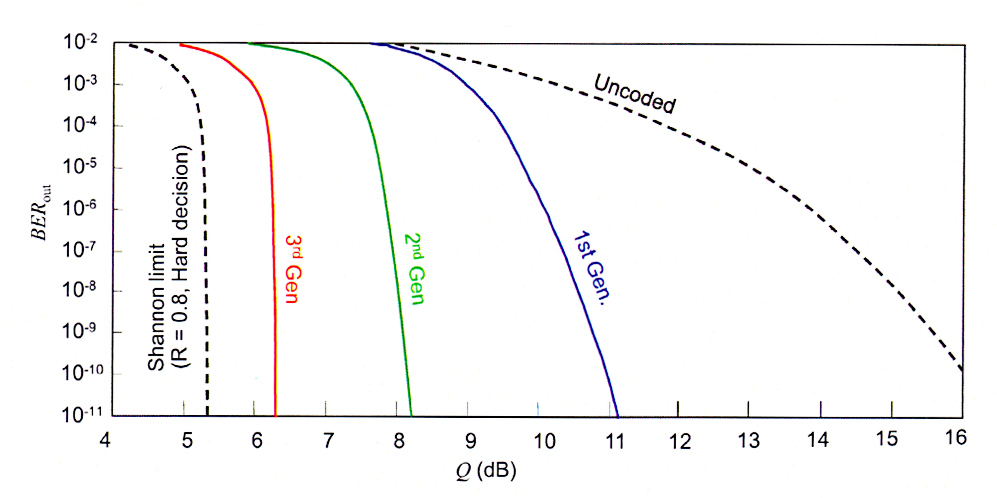A bit about the technology Forward Error Correction
One of the main limitations in the design of extensive optical transport networks is the signal-to-noise ratio (OSNR). WDM networks must operate within OSNR limits to ensure correct system operation.
The OSNR threshold is one of the key parameters that determine how far signals can be transmitted without the need for 3R regeneration.
For the formation of data channels with a speed higher than 10 Gbit, complex mechanisms of optical signal modulation are used to achieve a similar transmission distance of 1-10 Gbit communication channels. These modulation formats are needed to minimize the effects of optical phenomena such as chromatic and polarization mode dispersions, as well as to form an optical signal that complies with ITU 100/50-GHz standards, which is used in modern DWDM systems. The disadvantage of high-speed data transmission channels is the fact that they require a significantly higher OSNR ratio than conventional transmission systems (1-10 Gbit).
In 100 Gb systems, the minimum OSNR should be 10 dB higher than for signals in 10 Gb systems. Without some correction or compensation, OSNR limits 100G data transmission to very short distances, at the moment the maximum transmission distance is 40 km over standard single-mode fiber. However, due to modern error correction methods (Forward Error Correction - FEC), especially the Soft decision FEC algorithm, it is possible to expand the transmission of high-speed signals over extended distances.
')
Forward Error Correction (FEC) is a signal encoding / decoding technique with error detection and information correction by the lead method. Thus, receiving equipment can detect and correct errors that occur in the transmission channel. FEC dramatically reduces the number of bit errors (BER), which allows you to increase the signal transmission distance without regeneration.

There are several FEC coding algorithms that vary in complexity and performance. One of the most common codes for the first generation FEC is the Reed-Solomon code (255, 239). This code adds a bit - 7% of check bytes and about 6 dB of additional OSNR margin, but for high-speed optical networks, an increase of 6 dB is an improved performance indicator, increasing the distance between regenerators by about four times.

Some manufacturers offer, in addition to the Reed-Solomon code, more sophisticated second generation FEC coding schemes, for example, a preventive parameter for 10G and 40G optical interfaces. These algorithms, called “ultra” FEC or “enhanced” FEC (EFEC), also use no more than 7% of the transmitted frame, but they have more complex encoding / decoding algorithms that provide a greater OSNR gain - from 2 to 3 dB, rather than the Reed-Solomon code.
Along with the development of the first generation - “Reed-Solomon FEC” and the second generation - “EFEC”, which significantly improved the performance for 10G and 40G signals, a more efficient third generation FEC solution was developed, providing increased range and optimal performance for 100G high-speed data channels.
The third generation FEC solution is based on even more powerful encoding / decoding and iterative encoding algorithms. In hard decision FEC — a decoding unit determines a “hard” decision based on the incoming signal and initializes one bit of information as “1” or “0” by comparing with a threshold value. Values above the set threshold are defined as “1”, and values below are defined as “0”. The decoder uses extra bits to provide a more detailed and accurate indication of the incoming signal. In other words, the decoder not only determines whether the incoming signal is “1” or “0”, but also provides the “decision-making” reliability factor. The reliability factor is determined by the indicator, which indicates how much the signal is above or below the threshold value.

Using the reliability or “probability” of the bits along with the more sophisticated third generation FEC coding algorithms allows the SD-FEC decoder to provide an additional OSNR increase of 1-2 dB. While a 1-2 dB increase in OSNR does not sound impressive, it can be interpreted as a possible increase in distance of 20-40%, which is a significant indicator for 100G.

One of the drawbacks of the soft decision FEC is the fact that it requires ~ 20% of the volume of the transmitted frame, which is more than two times more than the occupied volume of the first and second generation FEC.
With an increase in data link speed from 10G to 100G, the OSNR requirement increased by 10 dB. Without a certain type of compensation or correction, the length of the routes with a channel speed of 100G will be very limited and uneconomical.
The FEC algorithms of the first and second generation were used on 10G and 40G to reduce BER and increase the distance. SD-FEC is a third-generation coding algorithm, providing data transmission for optical 100G networks over long distances and with a larger relay link.
The OSNR threshold is one of the key parameters that determine how far signals can be transmitted without the need for 3R regeneration.
For the formation of data channels with a speed higher than 10 Gbit, complex mechanisms of optical signal modulation are used to achieve a similar transmission distance of 1-10 Gbit communication channels. These modulation formats are needed to minimize the effects of optical phenomena such as chromatic and polarization mode dispersions, as well as to form an optical signal that complies with ITU 100/50-GHz standards, which is used in modern DWDM systems. The disadvantage of high-speed data transmission channels is the fact that they require a significantly higher OSNR ratio than conventional transmission systems (1-10 Gbit).
In 100 Gb systems, the minimum OSNR should be 10 dB higher than for signals in 10 Gb systems. Without some correction or compensation, OSNR limits 100G data transmission to very short distances, at the moment the maximum transmission distance is 40 km over standard single-mode fiber. However, due to modern error correction methods (Forward Error Correction - FEC), especially the Soft decision FEC algorithm, it is possible to expand the transmission of high-speed signals over extended distances.
')
Forward Error Correction (FEC) is a signal encoding / decoding technique with error detection and information correction by the lead method. Thus, receiving equipment can detect and correct errors that occur in the transmission channel. FEC dramatically reduces the number of bit errors (BER), which allows you to increase the signal transmission distance without regeneration.

There are several FEC coding algorithms that vary in complexity and performance. One of the most common codes for the first generation FEC is the Reed-Solomon code (255, 239). This code adds a bit - 7% of check bytes and about 6 dB of additional OSNR margin, but for high-speed optical networks, an increase of 6 dB is an improved performance indicator, increasing the distance between regenerators by about four times.

Some manufacturers offer, in addition to the Reed-Solomon code, more sophisticated second generation FEC coding schemes, for example, a preventive parameter for 10G and 40G optical interfaces. These algorithms, called “ultra” FEC or “enhanced” FEC (EFEC), also use no more than 7% of the transmitted frame, but they have more complex encoding / decoding algorithms that provide a greater OSNR gain - from 2 to 3 dB, rather than the Reed-Solomon code.
Along with the development of the first generation - “Reed-Solomon FEC” and the second generation - “EFEC”, which significantly improved the performance for 10G and 40G signals, a more efficient third generation FEC solution was developed, providing increased range and optimal performance for 100G high-speed data channels.
The third generation FEC solution is based on even more powerful encoding / decoding and iterative encoding algorithms. In hard decision FEC — a decoding unit determines a “hard” decision based on the incoming signal and initializes one bit of information as “1” or “0” by comparing with a threshold value. Values above the set threshold are defined as “1”, and values below are defined as “0”. The decoder uses extra bits to provide a more detailed and accurate indication of the incoming signal. In other words, the decoder not only determines whether the incoming signal is “1” or “0”, but also provides the “decision-making” reliability factor. The reliability factor is determined by the indicator, which indicates how much the signal is above or below the threshold value.

Using the reliability or “probability” of the bits along with the more sophisticated third generation FEC coding algorithms allows the SD-FEC decoder to provide an additional OSNR increase of 1-2 dB. While a 1-2 dB increase in OSNR does not sound impressive, it can be interpreted as a possible increase in distance of 20-40%, which is a significant indicator for 100G.

One of the drawbacks of the soft decision FEC is the fact that it requires ~ 20% of the volume of the transmitted frame, which is more than two times more than the occupied volume of the first and second generation FEC.
With an increase in data link speed from 10G to 100G, the OSNR requirement increased by 10 dB. Without a certain type of compensation or correction, the length of the routes with a channel speed of 100G will be very limited and uneconomical.
The FEC algorithms of the first and second generation were used on 10G and 40G to reduce BER and increase the distance. SD-FEC is a third-generation coding algorithm, providing data transmission for optical 100G networks over long distances and with a larger relay link.
Source: https://habr.com/ru/post/245101/
All Articles